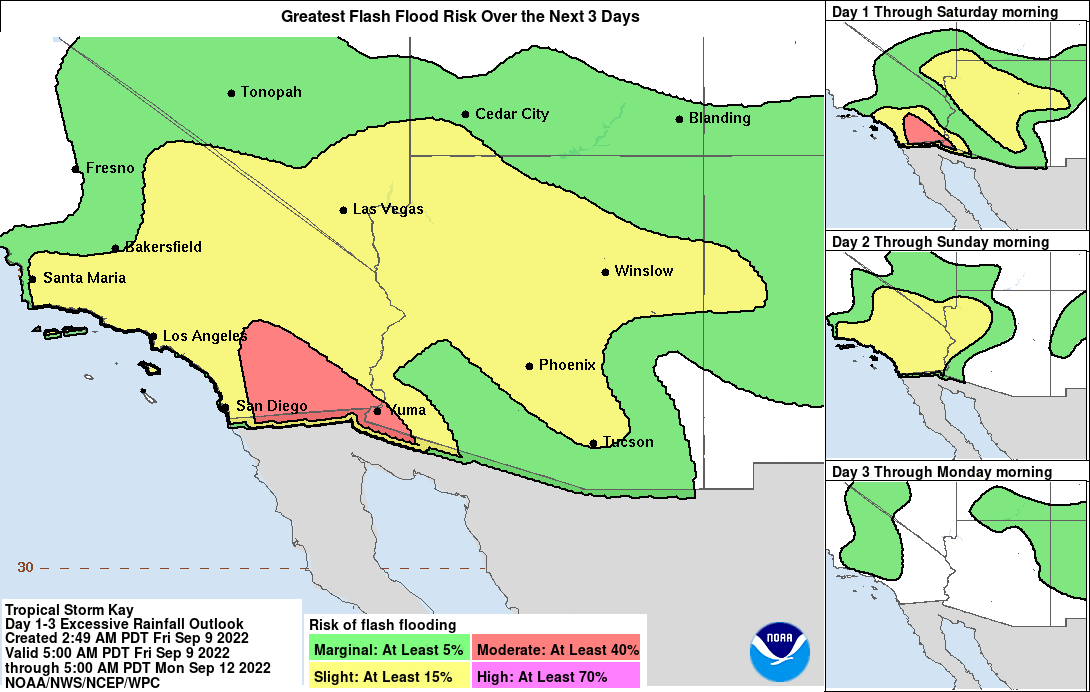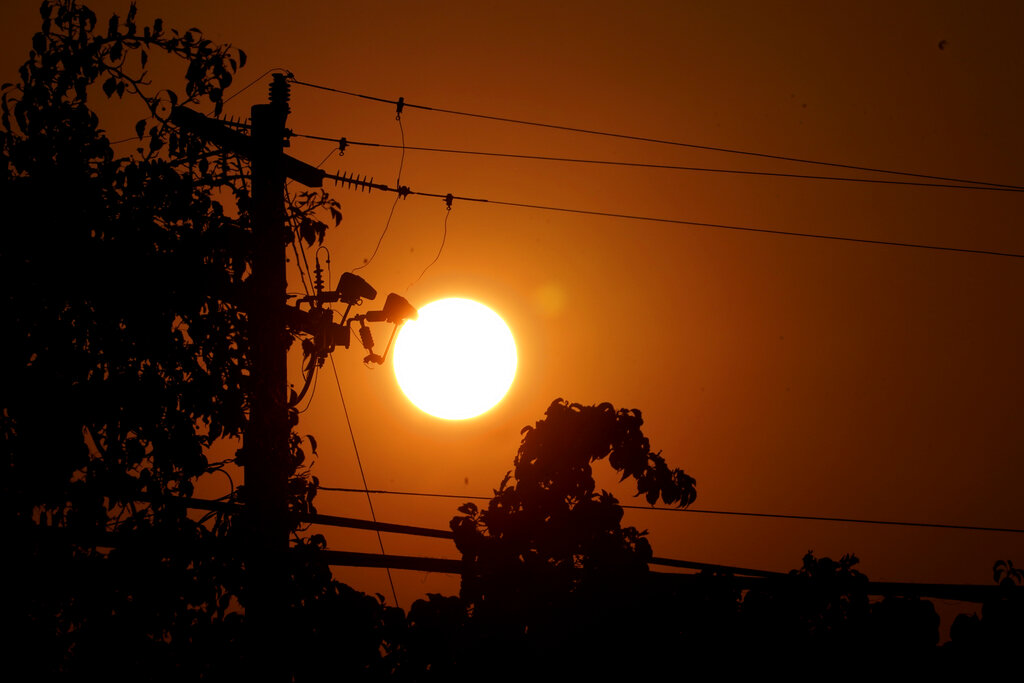LOS ANGELES (AP) — What remains of Hurricane Kay, now downgraded to a tropical storm, is expected to bring heavy rains and even flash floods to Southern California from Friday night through Saturday. Strong winds could initially make it difficult and dangerous for firefighters trying to corral blazes.
Heavy downpours could also unleash mudslides on mountainsides charred by recent fires. While several inches of rain could fall, much of it will run off the arid landscape and will not make a dent in the drought.
F?lood watches have been issued from the mountains and valleys of Southern California into the deserts as far east as western Arizona and southern Nevada. This is where rainfall from Kay is most likely to trigger flash flooding.
I?n addition to the rainfall, gusty winds will also develop in Southern California on Friday, particularly in the mountains, despite Kay's weakening well to the south. Some gusts over 50 mph are possible.

Meanwhile, Californians sweated it out amid a record-breaking heat wave entering its 10th day Friday that has helped fuel deadly wildfires and pushed energy supplies to the brink of daily power outages.
Relief is in sight as the remnants of a hurricane approach that will lower temperatures during the weekend but could bring another set of challenges: heavy rains that will be welcomed in the drought-plagued state but might cause flash floods.
California is just the latest casualty in a year of sometimes deadly heat waves that began in Pakistan and India this spring and swept across parts of the Northern Hemisphere, including China, Europe and others areas of the U.S.
The so-called heat dome that cooked California was stuck in place by an exceptional high pressure region over Greenland, of all places, that essentially created a meteorological traffic jam, said Paul Ullrich, a professor of regional climate modeling at the University of California, Davis. That prevented the high-pressure system that was forcing hot air over California from moving along.
Temperatures hit an all-time high in Sacramento of 116 degrees on Tuesday. Many other locations hit record highs for September and even more set daily high marks.
For nine days through Thursday, the vast energy network that includes power plants, solar farms and a web of transmission lines strained under record-setting demand driven by air conditioners.
Air conditioning puts the biggest strain on power sources during a heat wave and operators of the electrical grid called for conservation and warned of the threat of power outages as usage hit an all-time high Tuesday, surpassing a record set in 2006.
The state may have averted a repeat of rolling outages two summers ago by sending a first-ever text alert that blared on 27 million phones urging Californians to “take action” and turn off nonessential power. Enough turned up thermostats, turned off lights or pulled the plug on appliances to avoid power cuts, though thousands of customers did lose power at various times for other reasons.
The West is in the throes of a 23-year megadrought that has nearly drained reservoirs and put water supplies in jeopardy. That, in turn, led to a sharp decrease in hydropower that California relies on when power is in peak demand.

The extreme heat helped fuel deadly wildfires at both ends of the state as flames fed on grass, brush and timber already “preconditioned to burn" by drought and then pushed over the edge by the heatwave.
Firefighters struggled to control major wildfires in Southern California and the Sierra Nevada that exploded in growth, forced thousands to evacuate and produced smoke that could interfere with solar power and further hamper electricity supplies.
Two people died in the fire that erupted last Friday in the Northern California community of Weed at the base of Mount Shasta. Two others died trying to flee in their car from a fire in Riverside County that was threatening 18,000 homes.
